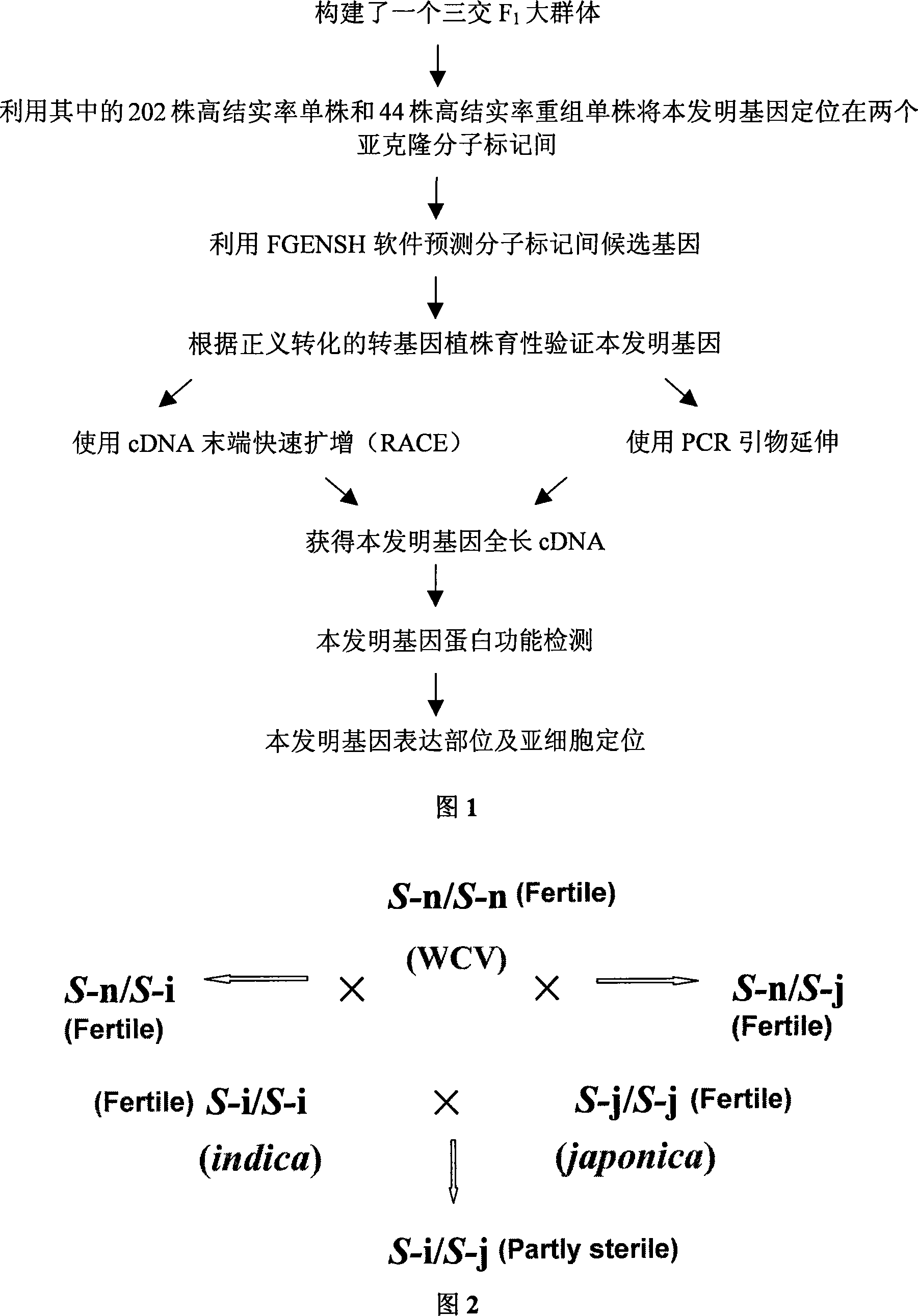Separating clone of rice wide compatibility gene S5 and uses thereof
A gene and rice technology, which is applied in the field of isolation and cloning of the rice broad-compatibility gene S5, can solve the problems of heterosis restricting the utilization of heterosis and the like
- Summary
- Abstract
- Description
- Claims
- Application Information
AI Technical Summary
Problems solved by technology
Method used
Image
Examples
Embodiment 1
[0027] Example 1: Isolation and cloning of DNA fragments comprising S5 gene segments
[0028] 1. Identification of rice wide-compatibility gene S5 by map-based cloning
[0029] In the present invention, three parents were used in constructing the targeting population: 02428, Nanjing 11 and Balilla. 02428 is a wide-compatibility japonica variety, which is selected from two japonica rice varieties Yunnan Xiegu and Shanghai Jibangdao, treated with radiation mutagenesis respectively, and crossed with materials selected by high light efficiency, and bred from the offspring ( Zou Jiangshi et al., Preliminary utilization of the wide-compatibility line 02428 in hybridization between indica and japonica subspecies. Chinese Agricultural Sciences, 1989, 22:6-14). Nanjing 11 is a medium indica variety bred by Jiangsu Academy of Agricultural Sciences, which is a derivative of Shengli indica. Balilla is a japonica variety imported from Italy.
[0030]In the preliminary work, the present ...
Embodiment 2
[0278] Example 2: Structural analysis of S5 gene in different subspecies of rice
[0279] The sequences obtained by sequencing in Example 1 were analyzed: the full-length cDNAs of rice varieties 02428 (wide affinity), Ballila (japonica rice) and Nanjing 11 (indica rice) were 1778bp, 1912bp and 1911bp respectively, and their structures consisted of three exogenous sub and two introns (Figure 9). Indica rice and japonica rice have one and only three base differences, of which Nanjing 11 has a single base deletion in the 3' untranslated region, Nanjing 11 and Ballila have two single base polymorphisms (single nucleotide polymorphism) in the coding region , SNP), these two SNPs form two missense mutations in the encoded protein (Figure 10). The S5 gene encodes a protein of 472 amino acids, and BLASTp analysis (http: / / www.ncbi.nlm.nih.gov / ) shows that the protein is highly homologous to aspartyl protease. PROSITE (http: / / www.expasy.ch / cgi-bin / prosite / ) analysis found that the pro...
Embodiment 3
[0280]Example 3: Using chip data to detect the expression level of S5 gene in the whole growth period of rice
[0281] The present invention utilizes the chip data (Database of the National Center of Plant Gene Research, available at http: / / crep.ncpgr.cn / .) to detect the expression level of the S5 gene in different tissues during the whole growth period of rice, and the chip data used include indica rice Zhenshan The expression profiles of 25 different tissues (Table 3) under different growth stages of 97 and Minghui 63 (Fig. 11). The results showed that the S5 gene was expressed at a very low level during the whole growth period.
[0282] Table 3 Microarray data corresponding to rice tissue name
[0283] Sample Tissue
PUM
 Login to View More
Login to View More Abstract
Description
Claims
Application Information
 Login to View More
Login to View More - R&D
- Intellectual Property
- Life Sciences
- Materials
- Tech Scout
- Unparalleled Data Quality
- Higher Quality Content
- 60% Fewer Hallucinations
Browse by: Latest US Patents, China's latest patents, Technical Efficacy Thesaurus, Application Domain, Technology Topic, Popular Technical Reports.
© 2025 PatSnap. All rights reserved.Legal|Privacy policy|Modern Slavery Act Transparency Statement|Sitemap|About US| Contact US: help@patsnap.com



